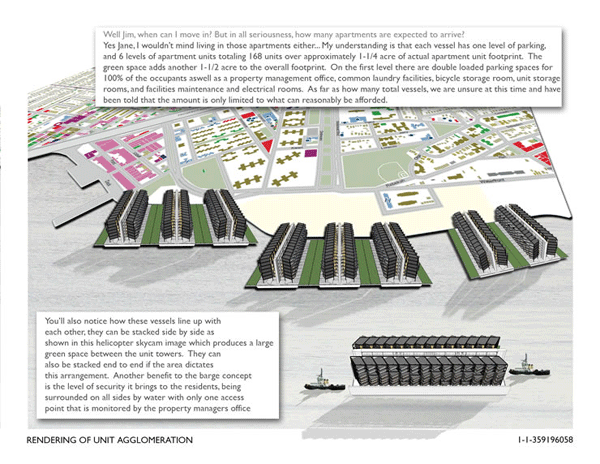
Photo by:
Many of the designs used New York’s extensive waterways to quickly deploy high-density residential units while keeping city streets clear for other reconstruction efforts. Selected as one of 10 finalists, Mobile Emergency Relief Ports are floating apartment buildings stationed on barges on rivers and bays around the city. They would be self-sufficient, with water purification and waste containment chambers, and instantly deployable. By Matthew Francke and Katya Hristova of Massachusetts.
In What If New York City…, a city-sponsored competition to design post-catastrophe emergency shelters for the five boroughs, the Office of Emergency Management (OEM) asked some tough questions: What if New York City suffered a catastrophic disaster, leaving hundreds of thousands suddenly homeless? How would residents survive? Would this post-catastrophe city feel anything like the New York we know?
This slideshow lets you consider these questions for yourself. They are culled from the 117 submissions to the competition, representing 30 countries. Applicants—mostly architects and engineers—expressed ways for New York to survive, even to thrive. Some envision the new New York City as a water colony, others as a city of modular and beehive-like high rises. Some emphasized immediate deployability and adaptability, others comfort and familiarity. All try, in their way, to think of the unthinkable.
A six-person committee comprised of the commissioners of the Department of Design and Construction and OEM and a prominent architect, engineer, city planner, and artist selected finalists earlier this month. Those 10 teams now have until May to further elaborate their plans, which will then be released in a report to an OEM advisory committee. Optimally, some of these concepts will be included in the Housing Recovery Plan of the city’s Coastal Storm Plan.
The Rockefeller Foundation and Architecture for Humanity New York co-sponsored the competition. All images reproduced courtesy of OEM.








